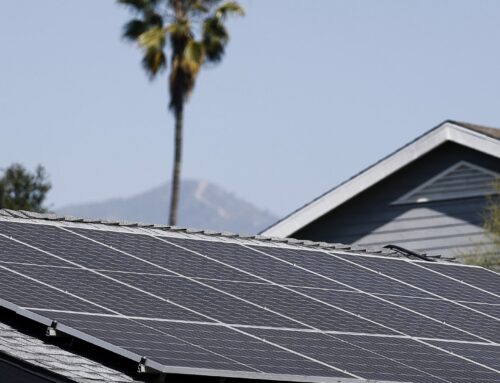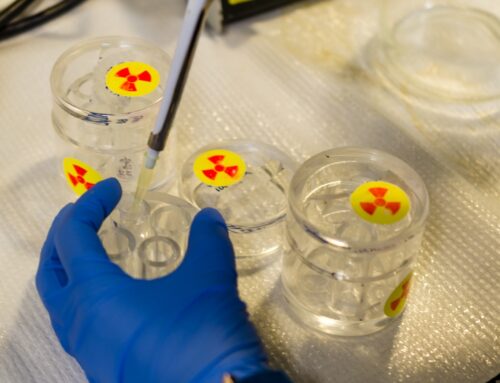Apple’s Tim Cook thought he had a Plan B for Trump’s tariffs. It wasn’t enough.
May 23, 2025
Apple (AAPL) CEO Tim Cook has spent years trying to shield the tech giant from tariffs by reducing its reliance on China, shifting production to countries like India and Vietnam in a strategy that dates back to President Trump’s first-term tariffs on Beijing.
But that effort now appears to have run into a familiar obstacle: Trump once again.
Apple stock erased over $100 billion from its market cap early Friday after Trump said the iPhone maker must pay at least a 25% tariff unless its iPhones are made in the US.
Read more: The latest news and updates on Trump’s tariffs
The warning underscores the limits of Apple’s recent effort to insulate itself from geopolitical risk.
AAPL ^GSPC ^IXIC
Although China still accounts for roughly 85% of iPhone production, Apple has significantly expanded its manufacturing footprint in recent years, investing heavily in countries like India and Vietnam.
India, in particular, has seen a surge in iPhone output as Apple sought to get ahead of Trump’s impending tariffs. This culminated in a record $2 billion worth of devices being airlifted to the US in March by suppliers Foxconn and Tata, just weeks before Trump’s Liberation Day announcement.
Since then, the president has paused most additional duties on other countries, with the exception of China. The US has placed a 30% tariff rate on Beijing imports, while most other countries face a lower 10% levy.
The shift is already reshaping the origins of Apple’s product sourcing.
“For the June quarter, we do expect the majority of iPhones sold in the US will have India as their country of origin and Vietnam to be the country of origin for almost all iPad, Mac, Apple Watch, and AirPods products also sold in the US,” Cook said on the company’s earnings call last month. “China would continue to be the country of origin for the vast majority of total product sales outside the US.”
On top of diversifying its supply chain, Apple announced plans earlier this year to invest more than $500 billion in the US over the next four years. That includes hiring 20,000 people and building a new server factory in Texas.
“We are bullish on the future of American innovation, and we’re proud to build on our long-standing U.S. investments with this $500 billion commitment to our country’s future,” Cook said in a company blog post.
But, as Friday’s warning showed, those efforts haven’t been enough to shield the company from Trump’s tariff threats.
“I have long ago informed Tim Cook of Apple that I expect their iPhone’s that will be sold in the United States of America will be manufactured and built in the United States, not India, or anyplace else,” Trump said in a Truth Social post on Friday morning. “If that is not the case, a Tariff of at least 25% must be paid by Apple to the U.S.”
The risk of even more duties pressures Apple’s already vulnerable business model.
In its latest earnings call, Apple warned of a $900 million tariff-related headwind this quarter, with analysts pointing to its overseas production hubs, particularly in tariff-targeted countries, as the biggest vulnerability.
Notably, this isn’t the first time the president has targeted specific companies with tariff threats. And as Yahoo Finance’s Ben Werschkul pointed out, the warnings often end without follow-through.
Meanwhile, Wall Street analysts have questioned the long-term feasibility of Apple shifting manufacturing to the US. Wedbush’s Dan Ives warned it could push iPhone prices to around $3,500, “a non-starter for Cupertino,” and added that such a transition would take five to 10 years to complete.
Read more: What Trump’s tariffs mean for the economy and your wallet
“We believe the concept of Apple producing iPhones in the U.S. is a fairy tale that is not feasible,” he said.
Nancy Tengler, CEO and chief investment officer of Laffer Tengler Investments, called Trump’s threats “silliness,” telling Yahoo Finance, “It is ridiculous to think that Apple can move all of their manufacturing back to the United States.”
She added, “It’s also ridiculous to think that consumers are willing to pay the $3,500 estimates for an iPhone if they are built in the United States.”
In addition to the tariff threat against Apple, Trump announced in a separate post that he was “recommending” a 50% tariff on the European Union, triggering a broader market sell-off alongside the Apple news.
During a Q&A session at the White House on Friday afternoon, Trump suggested the tariff policy would apply not only to Apple but also to competitors like Samsung.
“It would be also Samsung and anybody that makes that product. Otherwise, it wouldn’t be fair,” he said. “Again, when they build their plant here, there’s no tariffs. So they’re going to be building plants here.”
Alexandra Canal is a Senior Reporter at Yahoo Finance. Follow her on X @allie_canal, LinkedIn, and email her at alexandra.canal@yahoofinance.com.
Click here for the latest stock market news and in-depth analysis, including events that move stocks
Read the latest financial and business news from Yahoo Finance
Terms and Privacy Policy
Search
RECENT PRESS RELEASES
Related Post





